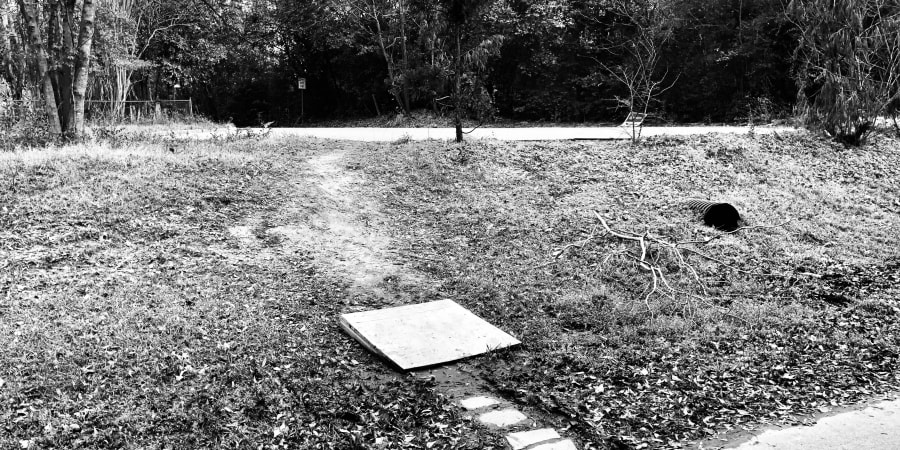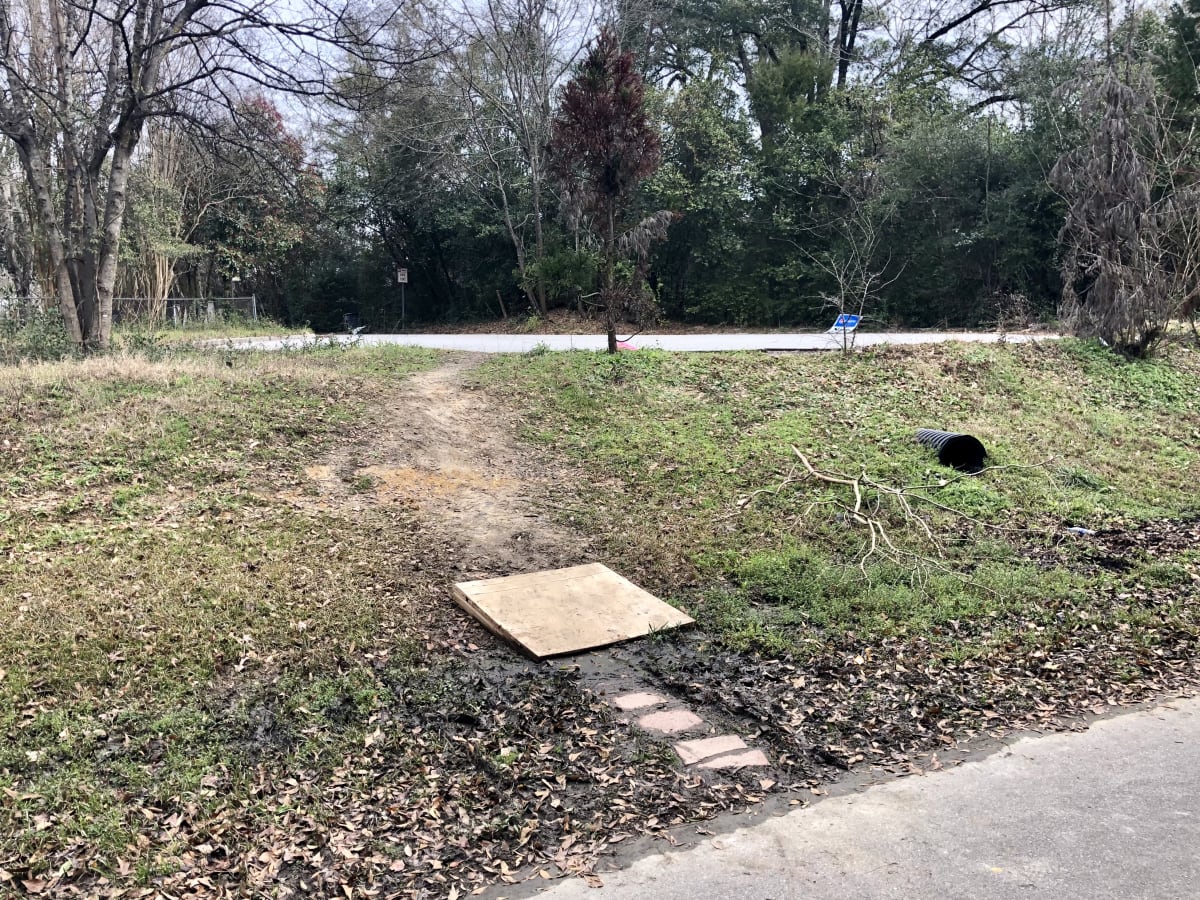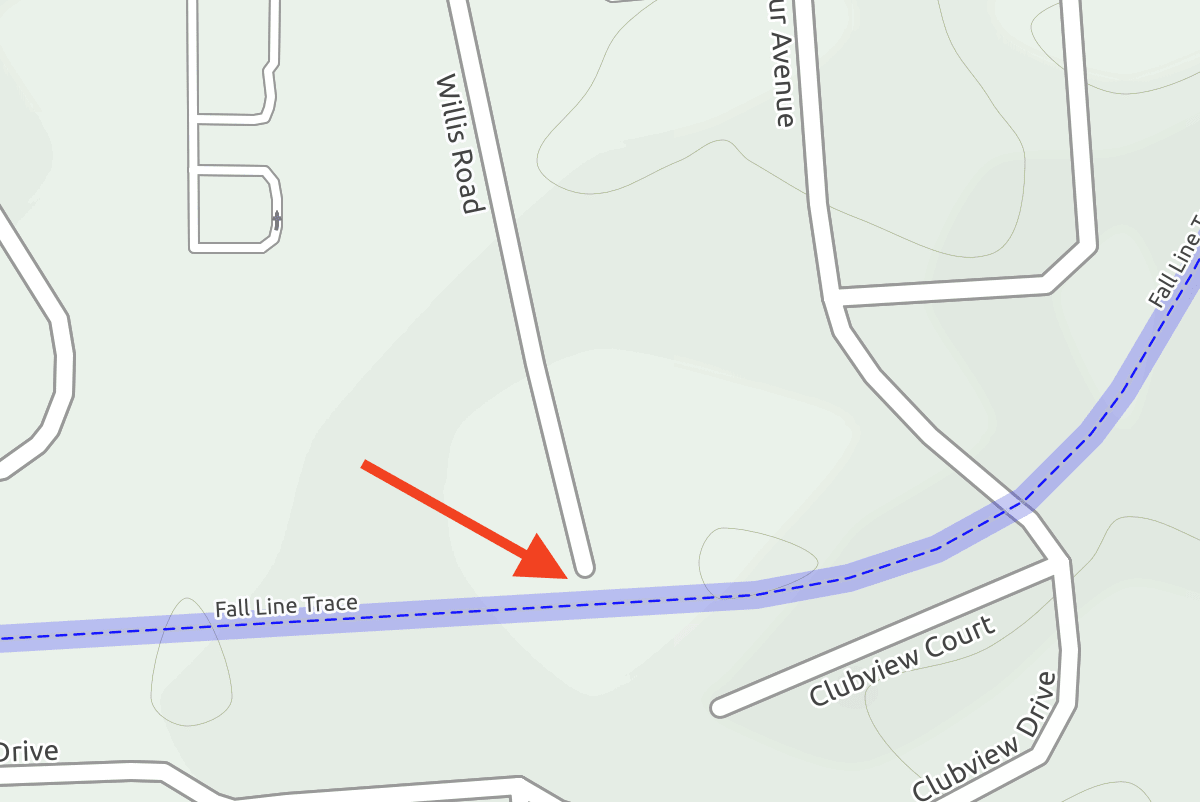
A wild demand trail appears
Despite all of the reverence given to free market ideology, our transportation has never fit in with it. People continuously wish for alternative transportation options, yet we remain dependent on our technocratic overlords and their car-centric master-plan. Nonetheless, there are occasional times when individuals empower themselves to take mobility into their own hands. The laws of supply and demand relent, and a “demand trail” appears.
I blogged about a local demand trail last year. These occur when pedestrian traffic goes off paved paths and blazes its own trail, when a trail is “demanded” but not officially supplied. They indicate a disconnect between the plans of the transportation leaders and the needs of the population.
I recently found a new trail is off Willis Road, which runs alongside several homes for about a quarter-mile before it ends in a cul-de-sac. There is nothing around that cul-de-sac, at least not officially. It has no infrastructure or developed properties. But just a few feet downhill is a heavily-used segment of the Dragonfly Trail Network. I’ve often walked between the road and the trail, which meant hopping over mud and braving a slippery hillside. It made me wonder why there isn’t any official connection between the two. The cul-de-sac could easily be a park, or parking lot, or anything. Surely, I’ve wondered, I can’t be the only one who sees this?
It turns out that I wasn’t. Recently, some enterprising citizens took matters into their own hands. They used bricks and scrap wood to construct an unofficial trail. I have no idea who did this, whether it was an individual or a group project, nor do I know anything else about it. While it may not look like much, it’s better than nothing.

(As a side note, these disconnects between roads and trails limit how useful GPS apps are when they’re used for biking and walking, which is something I mentioned when I wrote about a “waze for cycling” last year. When routes have unofficial connections that are obvious to humans, but that aren’t recognized by computers, then apps aren’t always able to provide optimal routes.)
We may not be able to go construct our own sidewalks and bike lanes on our own, but sometimes even small things make a big difference. It’s also important for us to continuously voice our concerns to our city leaders. Unless they themselves are biking and walking on our streets (usually they aren’t) then they have no way of knowing what we really need.

